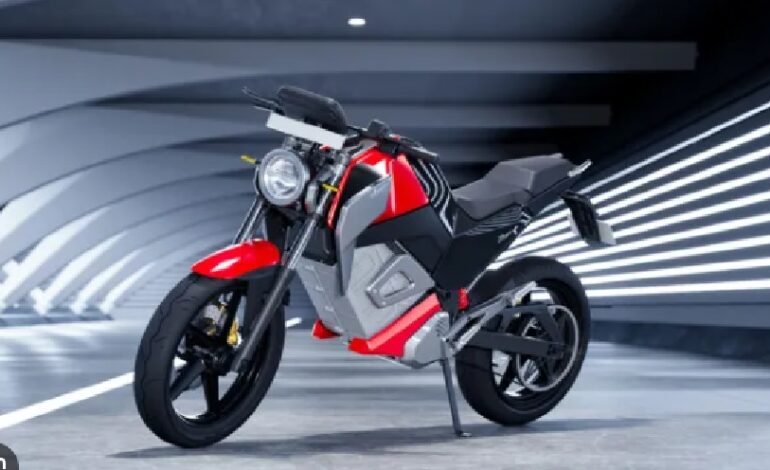Electric Bikes: The Future of Sustainable and Efficient Transportation

In recent years, electric bikes (commonly known as e-bikes) have rapidly gained popularity worldwide. These versatile, eco-friendly modes of transportation offer a unique blend of traditional cycling and electric-powered assistance, making them an attractive option for commuters, recreational riders, and even those looking to reduce their carbon footprint. As cities continue to grapple with issues such as traffic congestion, air pollution, and the need for sustainable transportation, electric bikes present a viable solution for a wide range of riders.
This article delves into the evolution of electric bikes, their benefits, the technology behind them, and the reasons why they are becoming a preferred mode of transport for many.
What Are Electric Bikes?
An electric bike is essentially a bicycle equipped with an electric motor that assists the rider’s pedaling. Unlike a traditional bicycle, where all the propulsion comes from the rider’s physical effort, an e-bike provides an additional boost, making it easier to navigate hilly terrains, ride longer distances, or simply reduce the effort required for a commute.
E-bikes come in various forms, but they can generally be classified into three categories:
- Pedal-assist (Pedelec): The electric motor activates only when the rider pedals, providing assistance proportional to the pedaling effort.
- Throttle-controlled: The motor can be activated via a throttle (like a scooter), allowing the rider to propel the bike without pedaling.
- Speed Pedelec: These e-bikes are similar to pedal-assist bikes but have a higher top speed, typically up to 28 mph (45 km/h).
The Rise in Popularity of Electric Bikes
Several factors have contributed to the increasing popularity of electric bikes:
- Urbanization and Traffic Congestion: With more people moving to cities, traffic congestion has become a significant issue. E-bikes provide a practical alternative to cars, allowing riders to navigate through traffic and reduce commute times.
- Environmental Concerns: As climate change becomes a pressing global issue, more individuals are seeking eco-friendly transportation options. E-bikes produce zero emissions, making them a greener alternative to gas-powered vehicles.
- Advancements in Technology: Improvements in battery technology, motor efficiency, and overall design have made electric bikes more reliable, affordable, and accessible than ever before.
- Health and Fitness: While e-bikes provide motorized assistance, riders still get a workout by pedaling, offering a balance of exercise and convenience. They are particularly beneficial for older adults or individuals with physical limitations who might find traditional cycling challenging.
- Cost-Effectiveness: Compared to cars, e-bikes are significantly cheaper to buy, maintain, and operate. They also save money on fuel, parking, and insurance, making them an economical choice for many.
How Do Electric Bikes Work?
At the core of every e-bike is its electric motor, which is powered by a rechargeable battery. The motor provides assistance to the rider in one of two ways: either by amplifying the pedaling effort (pedal-assist) or by directly driving the bike through a throttle mechanism.
Key Components of an Electric Bike:
- Electric Motor: The motor is the heart of the e-bike. It can be located in different parts of the bike—either in the hub of the front or rear wheel or at the bike’s crankset (mid-drive). Hub motors are common in affordable e-bikes, while mid-drive motors are more efficient and provide better weight distribution.
- Battery: E-bikes are powered by lithium-ion batteries, which are rechargeable and can last for hundreds of charge cycles. The battery’s capacity, measured in watt-hours (Wh), determines the bike’s range—how far it can travel on a single charge. A typical e-bike battery can provide a range of anywhere from 20 to 80 miles, depending on factors like terrain, rider weight, and the level of motor assistance used.
- Controller: The controller is the electronic system that regulates the motor’s power output. It communicates with sensors to determine how much assistance is required and ensures the motor operates efficiently.
- Pedal Sensors: These sensors detect the rider’s pedaling and determine how much assistance the motor should provide. The more forcefully the rider pedals, the more power the motor delivers.
- Display Panel: Most e-bikes are equipped with an LCD or LED display that shows vital information such as speed, battery level, distance traveled, and the mode of motor assistance.
Benefits of Electric Bikes
- Eco-Friendly Transportation
E-bikes are an environmentally friendly alternative to cars and motorcycles. With zero emissions, they help reduce air pollution and contribute to cleaner, more sustainable cities. E-bikes also have a smaller carbon footprint compared to traditional bicycles due to their efficient use of energy.
- Improved Health and Fitness
While electric bikes provide motor assistance, they still require the rider to pedal. This means that users can engage in low-impact exercise, improving cardiovascular health, strengthening muscles, and burning calories. For those recovering from injuries or with physical limitations, e-bikes offer a way to stay active without overexertion.
- Cost-Effective Commuting
Electric bikes are far more affordable than cars or motorcycles, both in terms of purchase price and ongoing maintenance. There are no fuel costs, insurance premiums, or expensive repairs to worry about. Furthermore, many cities offer incentives, rebates, or tax breaks for purchasing electric bikes, making them even more affordable.
- Convenience and Time-Saving
Commuting by e-bike can be faster than driving in congested urban areas. Riders can easily maneuver through traffic, avoid parking hassles, and often use bike lanes to bypass slow-moving vehicles. This can significantly reduce commuting times, especially for those living in densely populated cities.
- Accessibility
Electric bikes make cycling accessible to a broader range of people. Older adults, individuals with limited mobility, and those who might find regular cycling too strenuous can enjoy the benefits of biking with the assistance of an electric motor. E-bikes allow riders to tackle challenging terrains or longer distances that might be difficult on a conventional bike.
The Future of Electric Bikes
The future of electric bikes looks incredibly promising. With increasing investment in bike-friendly infrastructure, cities worldwide are encouraging the use of bicycles and e-bikes to reduce congestion and pollution. Governments are also recognizing the environmental benefits of e-bikes and offering subsidies and incentives to encourage adoption.
Additionally, technology continues to evolve, improving battery efficiency, range, and overall performance. Many e-bike manufacturers are exploring innovations like regenerative braking (which recharges the battery while riding), solar-powered charging systems, and lightweight materials to enhance speed and efficiency.
Challenges and Considerations
While electric bikes offer numerous benefits, there are some challenges and considerations:
- Cost: Although e-bikes are more affordable than cars, they are still more expensive than traditional bicycles. High-quality e-bikes can range from $1,000 to $5,000 or more.
- Battery Life: The battery life of an e-bike is limited, and over time, the battery will degrade and require replacement. However, with proper maintenance, modern lithium-ion batteries can last for several years.
- Regulations: E-bike regulations vary by country and region. Riders must be aware of local laws regarding speed limits, helmet requirements, and where e-bikes can be ridden (such as bike lanes or public roads).
Conclusion
Electric bikes are transforming the way people commute, exercise, and explore their surroundings. As a sustainable, efficient, and enjoyable form of transportation, they offer a compelling solution to the challenges of modern urban living. With advancements in technology and growing support from governments and communities, electric bikes are poised to become an integral part of the future of transportation, providing an environmentally friendly alternative to traditional vehicles and encouraging healthier, more active lifestyles.












